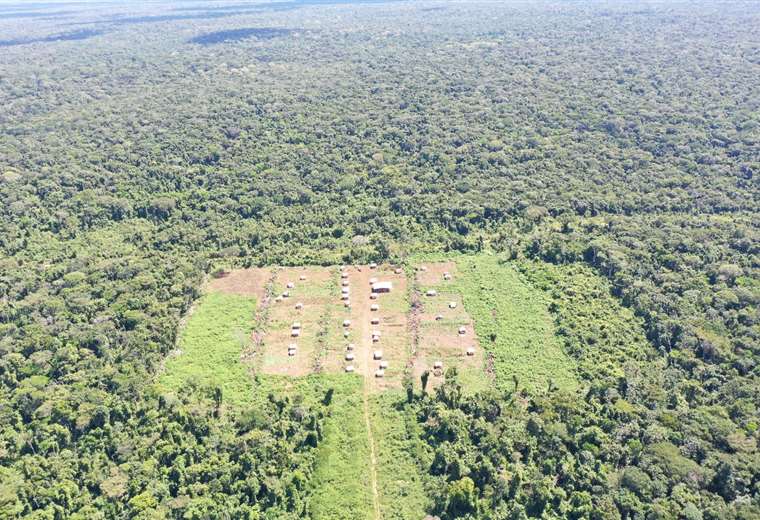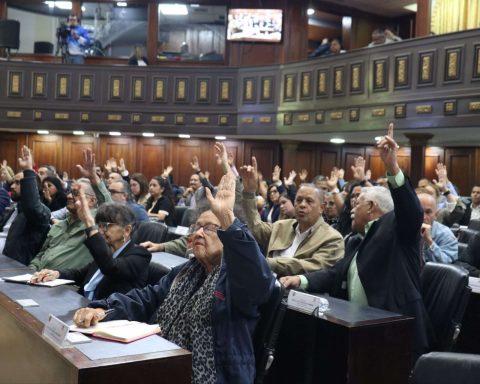September 22, 2024, 4:00 AM
September 22, 2024, 4:00 AM
“It is sad to carry out a serious analysis of the problem, because we will find complicity from some authorities and leaders of Santa Cruz who, by omission of responsibilities or inaction and even arguing extortion, have allowed this ruthless plan to advance to destroy the supposed power of the ‘Santa Cruz oligarchy’ at any price, including destruction and ecocide in the Bolivian East,” reflected Luis Alberto Castro, an expert in territorial planning.
He recalled that the department of Santa Cruz has been characterized by planning territorial occupation, based on the potential of the land, and that thus began the titanic work of preparing a Land Use Plan (PLUS), according to the Supreme Decree (DS) of 1995 and the law of 2003.
“This regulated its use through a matrix that explains the way to intervene, the activities that can be carried out and the entities that have the responsibility of its control, that is, if it can be cleared it must be with permission and supervision from the ABT; if it has to be expanded or roads built, from the SEDCAM, etc.”, he said.
In addition to the PLUS guidelines, Castro highlighted the Autonomous Statute, which in its article 114 – III mandates that human settlements, like any activity involving the use of land in the departmental jurisdiction, “must be carried out in accordance with the Territorial Planning Plan and the Land Use Plan, in protection of the sustainable development of the department.”
He also cited Article 115 of the same Statute, on the legal security of land and territories: “The collective right of the indigenous and original peasant nations and peoples of Santa Cruz over their territories is respected. Likewise, the right of the productive sector to private property and legal security over their lands is respected, both collectively and/or individually.”
And despite the positive signs for Santa Cruz in legal matters, Castro regretted that 12 years had passed without regional intervention in land administration, leading to the current serious situation.
He questioned whether what happened in 2019 would be repeated, and that the efforts to hold a forum on the fires, with figures of the stature of Alcides Parejas, Susana Seleme, Paula Peña, Roberto Vides, Humberto Vacaflor, Fernando Prado, Carlos Valverde, and Hugo Salmón, would have been in vain.
“Five years ago, the conclusion was reached that a territorial planning law was needed to assume constitutional powers in the control of the territory, but it was not until the end of last year (November 2023) that departmental laws 315, on Territorial Planning, and 316, on the modification of the PLUS, were enacted,” he noted.
Ricardo Valverde, Director of Territorial Planning for the Government of Santa Cruz, admitted in a recent forum on the subject that the PLUS Law 1553 indicates that in order to grant land or settlement, the requirement of a Certificate of Assignment of Land Use (CAUS), granted by the Departmental Government, is essential.
“During his administration, none of the titles he has given have been granted by the CAUS. It is already a violation of a law and a violation of the economy of Santa Cruz,” he told Eulogio Núñez, national executive of INRA, at the event.
He added that another of the problems with the INRA has to do with the boundaries in dispute in the Supreme Court of Justice of Cochabamba, since the INRA insists on sanitizing without specifying the jurisdiction of Santa Cruz, due to the social issue. “I have received titles from the INRA of San Julián, but they are within El Puente (Guarayos), which contradict DS 26570 and 5050,” he indicated.
He also addressed the issue of the Departmental Agrarian Commission (CAD), reminding Núñez that the departmental director of INRA is the permanent secretary, who has refused to be present at the various meetings.
“The CAD is legal, since it is in the law, and although the distribution of land is the exclusive competence of the central level of the State, the CAD sees the rulings on how this central level is going to distribute the land,” he stressed.
Regarding the Choré case, Valverde pointed out that the INRA has been involved in the violation of the reserve.
“I have to demand the annulment of all titles that do not have a CAUS. As good Bolivians, we must coordinate the three levels of the State so that citizens can be at peace with their properties,” he said.
The Director of Territorial Planning of the Government admitted that he has received complaints from producers, that if they do not comply with the Social Economic Function (FES), the INRA can leave them without their property.
“But why? The INRA does not have that authority. The department has not fought to enforce its jurisdiction, and the time has come now, when the clean-up is about to be completed,” he said.
A final problem cited by Valverde, speaking of the INRA land registry, is that rural land, in addition to land use planning, has been perforated by urban developments.
“They cannot develop on rural lands because the property is indivisible if it is smaller, but we have developments spread throughout the metropolitan area of Santa Cruz. This is not only the responsibility of the INRA, but also of the ABT, the Governorate, the municipalities and Real Property Rights, the latter registers the right and is where I have seen a strong perforation, even of the soil. And precisely on the issue of limits, by not stating the jurisdiction, we have unscrupulous people who register property in different jurisdictions,” he said.
Valverde summarized the problem in which both the INRA and the ABT have usurped functions of the Santa Cruz Governor’s Office; he publicly said that the INRA does not accept the notes he tries to leave in those offices.
The INRA
At the same forum on land, Eulogio Núñez responded to Valverde’s observations. He admitted that it is necessary to sit down, and noted that unfortunately a relationship with the departmental level could not be established since 2021.
“That year, when I entered, it was more a bombardment of wanting to take over the departmental INRA, or to say ‘I have the competence or not’. There it was the governor himself who proposed an enforcement action and he lost. And it was clearly indicated there that the Departmental Agrarian Commission came from when the prefect was appointed by finger. The degree of competence is in the Constitution,” he defended.
Núñez stressed that sanitation, distribution and land registry are exclusive competences of the central level of the State, but acknowledged that the PLUS was left to the Governorate, according to departmental autonomy.
He said he is open to dialogue, “let us share information. The INRA, for example, when it is sanitizing, asks the ABT for the use of the land, and this is based on the PLUS of Santa Cruz; it is not the INRA that changes,” he said.
In urban areas, the responsibility lies with the municipal governments, said Núñez. “The INRA has nothing to do with it. When they expand urban areas, the INRA loses its responsibility. And those who did not clean up the areas are unfortunately left with insecurity. And well, subnational governments should take responsibility for that,” he said.
Recoil
For Luis Alberto Castro, the new CPE, “prepared by foreign consultants”, while incorporating autonomy, controls its powers, especially in matters of land, territory and the environment.
He noted that this CPE requires the development of autonomous statutes for the governorates, and organic charters for the municipalities, and that at the municipal level it reduces powers to urban areas, eliminating what was achieved by Law 1551 on Popular Participation, which extended municipal jurisdiction and competence to the entire section of the province, and which established that, once the sanitation was carried out, the data on rural property would be passed on to the municipalities for their administration, through their municipal cadastre.
“Everything related to territorial administration was eliminated in the jurisdictional regime of the new CPE of the MAS, in 2009. It also grants the central power the administration of the rural cadastre, through the INRA, closing a circle that goes from the granting of lands, sanitation and rural cadastre in a single agency, which today has become a large real estate agency, managed at will by the so-called interculturals,” he alluded.
Valverde admitted that they are just beginning to exercise their powers as Governor and admitted that the INRA continues to award mining concessions, just like the AJAM. “We only found out about this when they obtain their legal status, because the CAUS is a requirement for legal status,” he said.


















